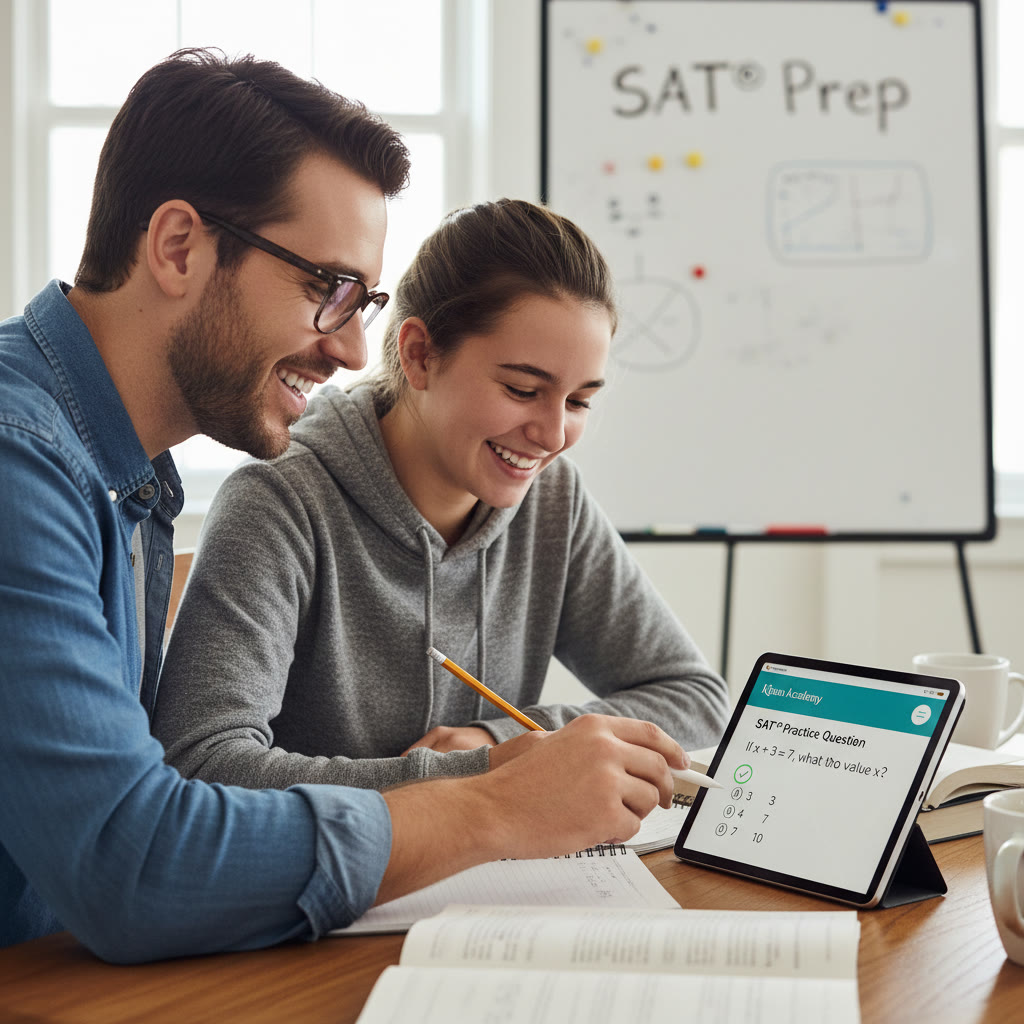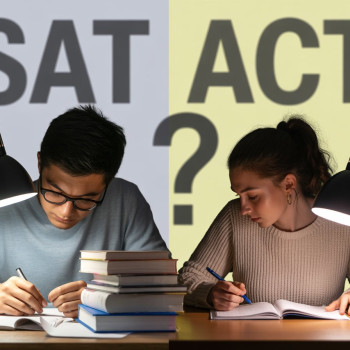Introduction: Why this matters now
Applying to the University of Maryland, College Park (UMD) is an exciting step. For many families, the SAT remains a key piece of the admissions puzzle—whether you submit scores to strengthen your application, to qualify for scholarships, or simply to demonstrate readiness. Over the last few years the landscape around testing has shifted, with more schools using flexible policies. Still, understanding the score ranges UMD typically sees, how admissions teams view test results, and how to plan your preparation is essential.

What UMD typically expects: SAT score ranges and context
When advisors and admissions officers talk about SATs for UMD, they rarely name a single cut-off number. Instead, they look at ranges of scores for admitted students and how those scores fit alongside GPA, coursework rigor, essays, extracurriculars, and recommendations.
To give you a clear target: the middle 50% SAT range for admitted freshmen to UMD usually falls in the higher end of the national scale. This range gives you a realistic sense of competitiveness and helps you set a target score that will make your application stand out.
Reading the range: what middle 50% means
“Middle 50%” refers to the scores that lie between the 25th and 75th percentiles for admitted students. If you are scoring in or above that range, your SAT result will be consistent with what many admitted students achieved. Scores below the 25th percentile aren’t automatically disqualifying, but they do mean other parts of your application will need to be stronger to balance things out.
How admissions uses SAT scores
UMD’s admissions committee places SAT scores in context. They consider:
- High school transcript and the rigor of courses (AP, IB, honors).
- Grade trends—do your grades show improvement or consistency?
- Extracurricular involvement and leadership.
- Essays and recommendations that speak to character and fit.
In short: a strong SAT adds evidence of academic readiness, but it isn’t the only signal. For many applicants, especially those near the margins of the middle range, a focused test prep plan can be the difference between being waitlisted and being admitted.
Is UMD test-optional?
University policies on testing have been evolving. Some years saw more flexible (test-optional) approaches, while others shifted back toward recommending or requiring scores. Because campus and statewide policies may change, treat the “test-optional” conversation as something you should verify for the specific admission cycle you’re applying to.
Even if UMD is test-optional for your application year, consider whether sending your SAT score will help you. If your score is at or above the middle 50% range and complements a strong GPA, it will likely enhance your application and may open doors for merit scholarships.
Practical target scores and scholarship thresholds
Set two target scores to guide your preparation:
- Baseline target — a score that aligns with the lower end of the middle 50% for admitted students.
- Stretch target — a score near or above the 75th percentile, strengthening competitiveness and scholarship chances.
Many merit scholarship decisions factor standardized test results into their formulas. To maximize your financial aid options, aim for the stretch target if possible.
Sample score table (use as a planning tool)
| Metric | Recommended Target | Why it matters |
|---|---|---|
| Baseline Target | Score near the 25th–50th percentile of admitted students | Aligns with typical admits; reduces risk if other areas are very strong |
| Stretch Target | Score near or above the 75th percentile | Boosts admission chances and scholarship eligibility |
| Superscore Strategy | Combine strongest section scores across test dates (if allowed) | Improves final reported score; check UMD’s current policy |
Digital SAT: what’s different and how to adjust
The SAT has moved to a digital format, and that changes some of how you should prepare. The test is shorter, delivered on a device, and features adaptive sectioning in some administrations. That means stamina and test-day tech comfort are as important as content knowledge.
- Practice on the same type of device you’ll use on test day.
- Build pacing strategies for each section—digital timing can feel faster.
- Use official digital practice tests and review the question types that adapt.
Working with tutors or programs that are familiar with the Digital SAT can speed this adjustment. Sparkl’s personalized tutoring, for example, blends 1-on-1 guidance with AI-driven insights to tailor practice sessions to the digital format, focusing on pacing, question patterns, and weak-spot remediation.
A 12-week SAT study timeline you can actually follow
Below is a pragmatic, results-oriented plan. You can compress or lengthen the timeline depending on how much time you have before your target test date.
- Weeks 1–2: Diagnostic test and goal setting. Identify strengths and weaknesses; set baseline and stretch targets.
- Weeks 3–6: Build core skills. Focus on content gaps, vocabulary in context, algebra and problem-solving, evidence-based reading, and essay structure if applicable.
- Weeks 7–9: Targeted practice and timing. Drill section-specific strategies; simulate test conditions weekly.
- Weeks 10–11: Full-length practice tests and review. Tighten pacing and accuracy; work through every missed question to understand error patterns.
- Week 12: Light review and rest. Focus on confidence-building, logistics for test day, and healthy sleep patterns.
Students using personalized tutoring often find that a mix of regular practice and weekly check-ins with a coach keeps momentum high. One-on-one tutoring is particularly valuable in the middle weeks when you’re closing content gaps and sharpening strategy.
How to use practice test results
Don’t just take practice tests—mine them for insight. Track the types of mistakes (careless errors, pacing errors, conceptual gaps), then prioritize those weaknesses. A tutor or program that provides AI-driven analytics can accelerate this step, turning data into daily practice tasks that actually move your score.
Essay, subject tests, and supplemental requirements
UMD’s application requirements focus mainly on coursework, grades, and test scores (if submitted). The SAT Essay and legacy subject tests are no longer central in most admissions processes, but you should always confirm the current application cycle’s specifics. For specialized programs (engineering, honors), additional portfolio items, audition pieces, or subject-specific recommendations may be relevant.
How to present your application if your SAT is below target
If you’re below the baseline target, don’t panic. There are smart strategies to strengthen your candidacy:
- Show upward grade trends or rigorous senior-year coursework.
- Submit strong letters of recommendation that highlight academic insight and maturity.
- Craft thoughtful personal essays that reveal character, perspective, and resilience.
- Consider retaking the SAT after a focused prep cycle or submit SAT II/other academic evidence if applicable.
Personalized tutoring can help you design a retake plan that’s efficient and targeted—Sparkl’s tutors, for instance, often build a short, high-impact study plan that focuses only on the skills and question types a student needs to improve most.
Test day logistics and nerves: small details that matter
Test day success is as much about logistics as it is about content. Some practical tips:
- Know your test center and arrive early, or check device requirements if testing at school.
- Bring permitted ID and backup chargers or power banks if allowed for digital accommodations.
- Practice mindfulness or a simple breathing routine to manage test anxiety.
- Eat a balanced breakfast and pack snacks where allowed for breaks.
Working through at least one full-length practice test under conditions that mimic test day is a good anxiety reducer—familiarity breeds confidence.
Scholarships and financial aid: how the SAT can help
Some merit scholarships consider SAT scores as a factor. Achieving a score near the higher end of UMD’s admitted range can make you eligible for more institutional funding and certain departmental awards. When you and your family plan financially, put scholarship deadlines and required score thresholds on the calendar.
Real-world examples: two student scenarios
Here are two short case studies that show how SAT strategy works in practice.
Case A: Maya — the strong GPA, average test scores
Maya has a 3.9 GPA with AP classes but an SAT closer to the baseline. She invested in 8 weeks of targeted digital-SAT tutoring focusing on reading and algebra pacing. She improved section accuracy and gained 90 points overall. Her revised application—retaken score, updated teacher rec, and a compelling essay about community STEM outreach—moved her from waitlist to admit.
Case B: Jamal — the lower GPA, high SAT
Jamal struggled with a lower GPA due to family responsibilities in sophomore year but scored near the 75th percentile on the SAT after a disciplined prep schedule. He used his essays to explain circumstances and highlighted community leadership. His strong SAT helped admissions see his academic potential and led to both admission and departmental scholarship consideration.
What parents can do to help—without doing the work for the student
Parents are crucial allies in the process. Here are supportive steps you can take:
- Help build a calm, distraction-free study environment.
- Encourage a balanced schedule—sleep, study, and downtime.
- Attend information sessions about testing and financial aid deadlines.
- Consider investing in targeted test prep if it fits the family’s resources.
Parents who are involved but not intrusive often see the best outcomes—students maintain ownership while benefiting from structure and encouragement.

How to evaluate and choose test prep help
There are many options for test prep: self-study with official practice, group classes, and private tutors. When choosing help, ask these questions:
- Does the program provide diagnostic testing and a customized plan?
- Are tutors experienced with the Digital SAT and current question types?
- What evidence of results do they present (without making unrealistic guarantees)?
- Is the support flexible and aligned with your student’s schedule and learning style?
Personalized 1-on-1 tutoring is often the fastest path to targeted improvement because it tailors lessons to a student’s unique error patterns. Programs that combine human coaching with data-driven feedback—like Sparkl’s personalized tutoring model—can accelerate progress by focusing only on the highest-impact skills for each student.
Final checklist before you apply to UMD
- Confirm current SAT policy for the admission cycle (test-optional vs. required).
- Decide whether to submit scores and which test date is your best one.
- Request official score reports through College Board if you’re sending scores.
- Ensure your application highlights academic rigor, leadership, and fit with UMD.
- Apply for scholarships early and note any score thresholds.
- If you’re retaking the SAT, leave room in your timeline for score reporting before application deadlines.
Parting advice: balance ambition with authenticity
Applying to UMD is not just about reaching a number on a page. It’s about showing who you are as a learner and a community member. Use the SAT as a tool to tell that story—prepare smartly, choose resources that fit your student’s needs, and keep perspective. A well-rounded application that includes a solid SAT performance, thoughtful essays, and evidence of intellectual curiosity is compelling.
If you want a structured, individualized path to your score goals—one that blends expert tutoring with actionable, data-informed practice—consider personalized options. Sparkl’s approach to 1-on-1 guidance, tailored study plans, expert tutors, and AI-driven insights is designed precisely for students who want targeted progress without wasted time. When used thoughtfully, such support can turn steady effort into measurable results.
Next steps
Start with a diagnostic practice test, set realistic targets, and build a timeline that gets you to your best test date. Keep a log of progress and adjust strategies based on data—not guesswork. And remember: the path to UMD is a marathon, not a sprint. With the right plan, solid practice, and support where needed, you can present an application that reflects your best self.
Want help getting started?
Begin with one full practice Digital SAT under realistic conditions. From that result, make two plans: a study plan you can do on your own, and a shorter, high-impact tutoring plan if you want to accelerate. Both can lead to success; choose the route that fits your timeline, learning style, and resources.
Good luck—your preparation today is the foundation for the opportunities you’ll build tomorrow.

















No Comments
Leave a comment Cancel